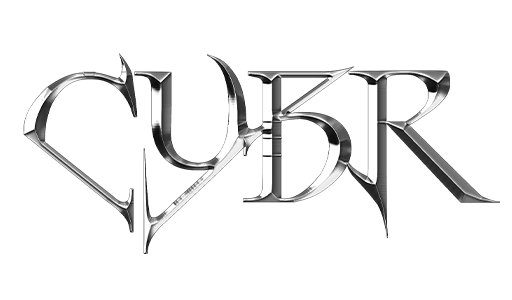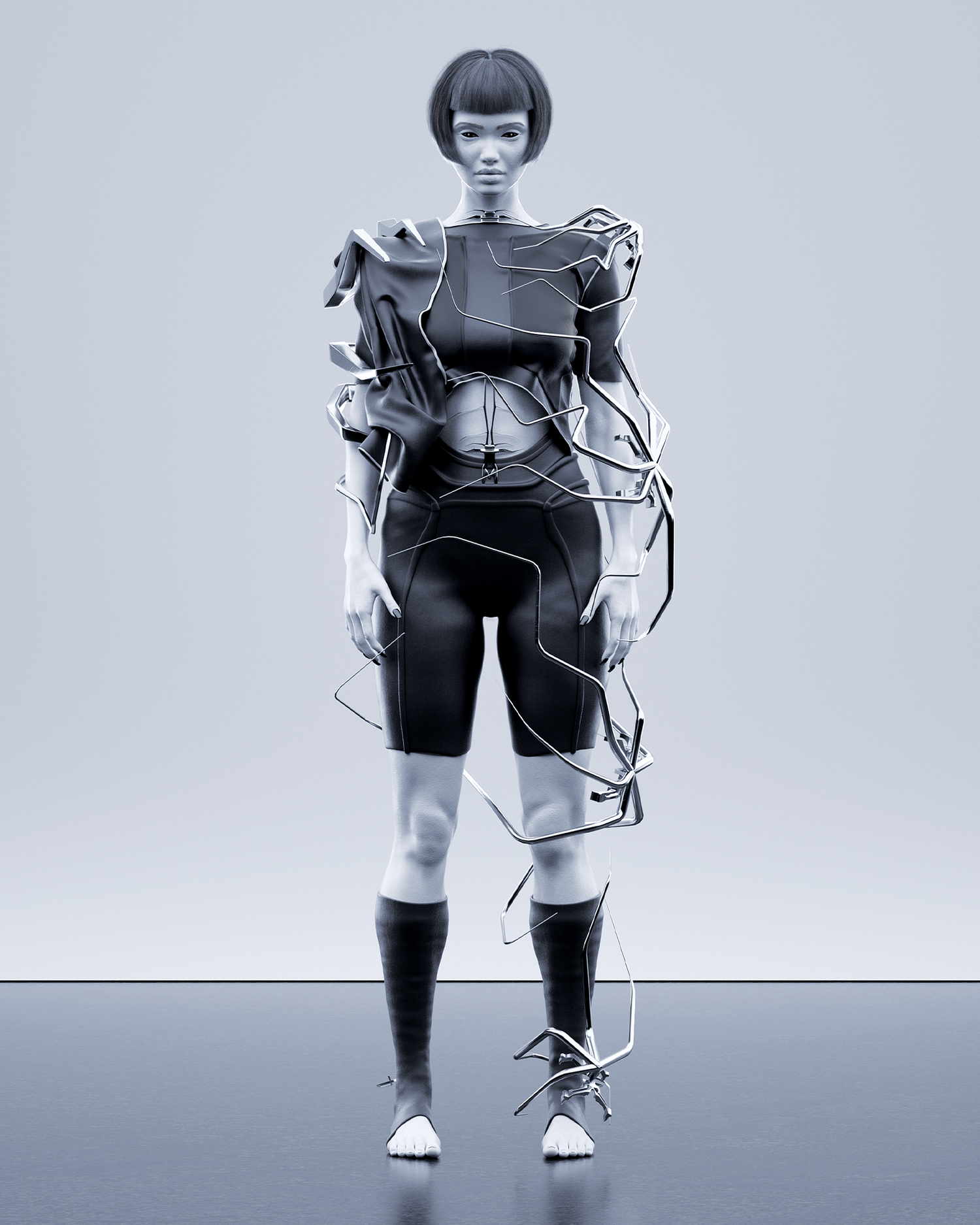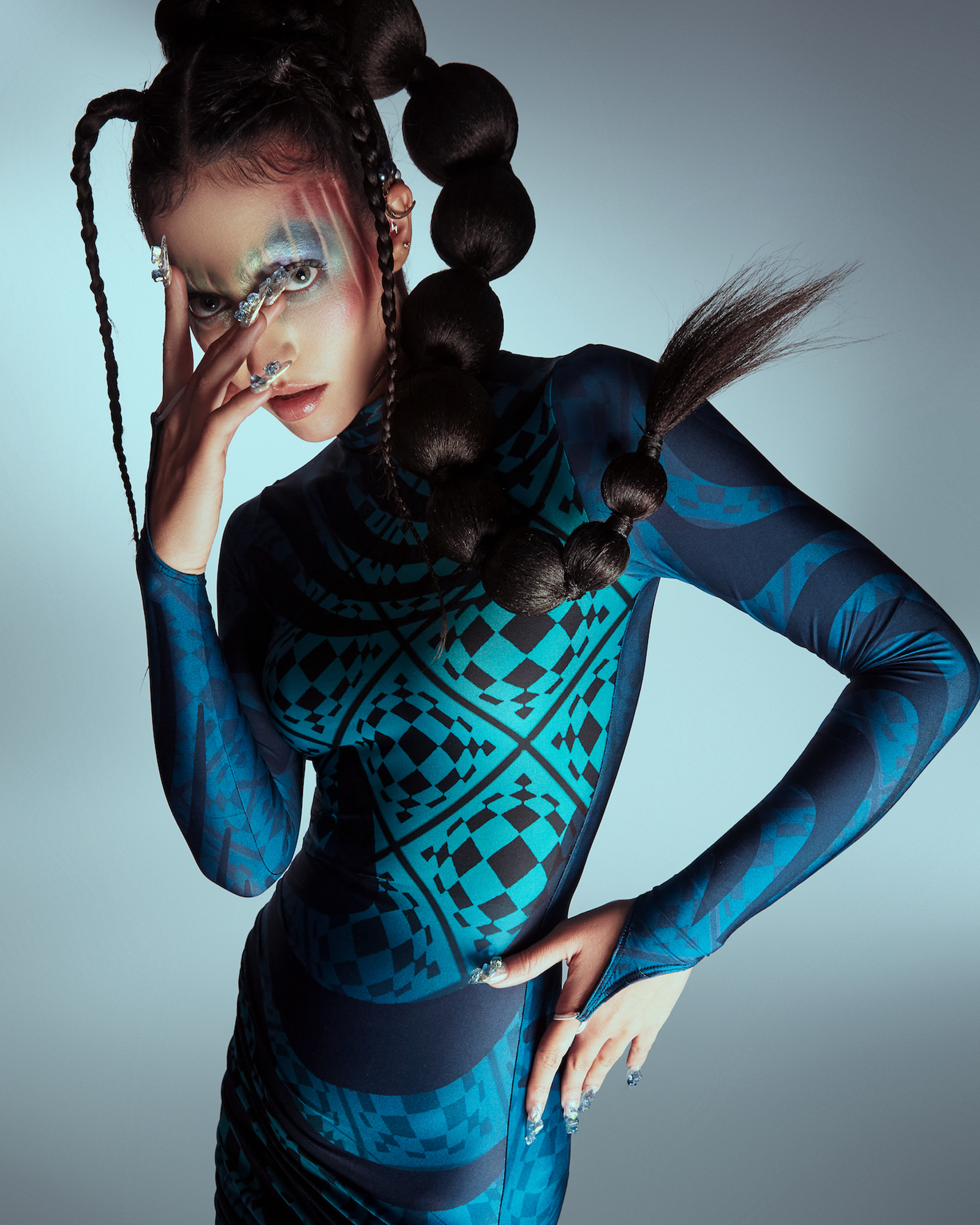This article was first published in CYBR Magazine ISSUE 09 "MACHINA".
Digital fashion is currently at the absolute pinnacle of its own innovation, with artists, creatives and companies trying to work out precisely what the technology can do for us, and how we might be wearing fashion digitally in the next decade. However the idea of digital fashion is something relatively new, some will tell you it’s been around for years, but the ability to try on fashion in augmented reality is only just coming to fruition. This is the exploratory phase of this new medium, and a few artistic pioneers of the space are rising to the top, one of those pioneers is ROMEO, ROMEO.
ROMEO, ROMEO is a fashion-art house creating sculptural, visionary digital garments, designs and experiences. Producing an edgy Y2K, solarpunk style aesthetic that is almost completely made of digital chrome, metal and glass. We caught up with the designer to talk digital fashion, artificial intelligence and the harmony of man and machine:
What was the catalyst for you to start designing digital fashion?
My journey with digital fashion started unintentionally. It came from me wanting to experiment with some 3D art a few years ago, and quickly realizing that I could not find any clothing for the avatars that I thought was suitable. There seemed to be a lack of items that I felt someone my age [a twenty something] would wear, and those items that were slightly modern were used so much that they lost their appeal. I didn’t want people to recognize the exact same pair of trainers that everyone else used, I felt it would spoil the illusion I was trying to create. So I started learning how to create my own, including all of the quirky complicated workflows that existed then, and still do today to some extent. I think at some point along that journey I realized that I didn’t have to just make typical clothing, I could really play with it in ways you cannot do in the real world. That is when I started ROMEO, ROMEO, which acts as many things but primarily a digital fashion lab, and a way of exhibiting my creations.
Your work has a very machine based aesthetic about it, what are your influences as you design?
I like the idea of the clothing I make to have a purpose. To be reactive in some way to its surroundings. I take a lot of inspiration from architecture - particularly how good architecture projects are focused on harmony with the landscape, good ergonomics and sustainability. I find that designing with that kind of purpose leads to much more memorable, nuanced creations. There is a beautiful irony of incorporating technical hardware, machine inspired elements into these simulated soft fabrics - as it is a machine that I make all of this on in the first place.
How do you see digital couture evolving into the future, in relation to traditional couture?
Digital fashion has been around for a long time. Since games were made, there have been incredible digital clothes created for the characters, however I think the idea of making digital fashion for the sake of fashion as an art form is relatively new, and most people are still exploring and just finding what is possible. Even though the barrier to entry is getting lower everyday, it still takes a lot of time and knowledge to model, sculpt, texture, light and render a digital garment to the point where it looks believable. As time passes I think the quality of work will just get better and imaginative designs will start to set the precedent for what digital fashion can be, so people stop seeing it as a niche online experiment and it can position itself as the genuine art form that it deserves to be.
Your work creates a certain harmony between ‘man’ and ‘machine’, is this intentional?
It is definitely intentional, I design everything with the avatar in mind and how it would look on them if they were walking around or interacting with the world. The good thing with digital is that it lets you cheat or get away with things, so I only have to create the illusion that there is some kind of connection between the garment and wearer. The more I am able to mold and manipulate that connection the more interesting the results. I would rather plant the seeds, for example, for how one of the exoskeletons is powered and connected rather than being too evident, as I am not restricted to our current technological standards, or the real world at all.
Given this theme with your work, how do you feel A.I and machines will evolve in the future, in harmony with man, or as its own entity?
A few years ago I briefly studied how neural networks worked, and then how GANS [machine learning] worked. I wasn’t proficient enough at coding to bring any of my ideas to life but I could easily think of twenty or more 3D workflow problems that this kind of machine learning could aid or even solve. Even in the short amount of time that I have been designing digital clothing, the workflow has changed. There are whole skill sets that are becoming less and less required. I am not sure whether I am scared or excited by it. There are definitely benefits, like the ease of use some of this will bring by allowing creatives to focus on creating rather than getting bogged down in jargon, but I do think it tells us that technology is changing to the point that people won’t always be hired for their technical ability, but their imagination. Being a unique creative thinker is your best way to immunize against the machine.
How do you see your work interacting with virtual worlds as more metaverses begin to emerge?
When I started ROMEO, ROMEO I was predominantly trying to make the most high fidelity fashion and sculpture that I could. Almost just as an art project, rendered in short animations with custom scored music. However now there seem to be a lot of opportunities to try and port my work into these digital playgrounds. The struggle is trying to maintain the integrity of the designs while having to drastically reduce the poly count. I see these things as temporary problems though, I definitely think some form of Metaverse will emerge, maybe it already has, and a 3D world with engaging semi-realistic graphics would be all that's needed for a whole ecosystem of 3D creatives to flourish.
What attracts you to use predominantly glass and metal in your designs?
I think the combination of already structurally questionable sculptures mixes even better when there are seemingly impossible materials used for it. The contrast fabrics make with chrome or transparent materials is also something I enjoy exploring, even if it is a lot more computationally expensive to do so. That being said, social media loves to put artists and designers in neatly defined boxes. So even though I really enjoy the formula of fabric and chrome, I definitely intend to widen the types of materials I use.
There seems to be a protective element with all your work, can you talk about your vision and reasoning behind these ‘armoured’ pieces?
My approach to digital fashion is that I always try to make it do more than conventional fashion. So when I started imagining what I would make my clothing do if anything was possible, I started thinking about protective qualities. Clothing that shields you from different elements. Instead of it protecting you from wind or rain, it can protect you from distress or jealousy for example. So with almost all the garments I make I have some kind of defensive quality in mind, even if it's not obvious.
Your statement piece is entitled ‘Chrome Dragon’, could you tell us more about the creation and the meaning behind it?
My very first project was a small selection of garments called “Digital Armour”, but as it was my first it was more exploratory in nature. Chrome Dragon was the first project where I knew my direction and general workflow before starting it. I wanted to create three different outfits, all with chrome detailing that would each offer some kind of protection as explained earlier. I also wanted to experiment with animating these outfits, understanding that they could be ‘activated’ or ‘deployed’ in some way, and to make this part of the spectacle. I didn‘t know what I was going to call the collection until I had made the first outfit, and then the claw-like structure I created made me think of some kind of robotic dragon claw, and if I could have any creature protecting me, I think a dragon would definitely be up there.
You’ve mentioned you’re investigating a more web3 approach to your work, with even a potential game, could you tell us more about where you’re heading?
I think with how much more approachable software is currently, games are becoming a viable option to use as a medium for storytelling without needing a huge team. If you are lucky enough to be able to afford even a fairly modest computer or laptop, the things one single person is now able to create are quite staggering. For me with my work, the natural progression has always been to imagine and create the worlds my garments would inhabit. I spoke earlier about how I think about purpose with all my designs, but recently I have been working on complete story lines for each of them. I am hesitant to call it a game at this point because so often people underestimate the enormous challenge of creating even a simple game that's actually compelling, but I definitely want to utilize the incredible free tools that are now available to facilitate a visual, interactive experience that expands upon my work in a meaningful way.
How do you see digital fashion as a part of the world in the year 2032?
The words digital fashion will mean different things to everyone, and I can find it difficult to keep up with the ever expanding use cases for it. But it is worth remembering the variety of things that digital fashion already facilitates. Some of the biggest fashion houses in the world have been using elements of digital fashion in their design process for years already. Then there is one ability to try on clothes in AR or VR, that has an ecosystem of its own. Then the use of digital fashion in games or other digital goods. So by 2032 I would assume digital fashion will continue to grow and have a bigger, more obvious presence in our lives - and our digital lives than ever before.


